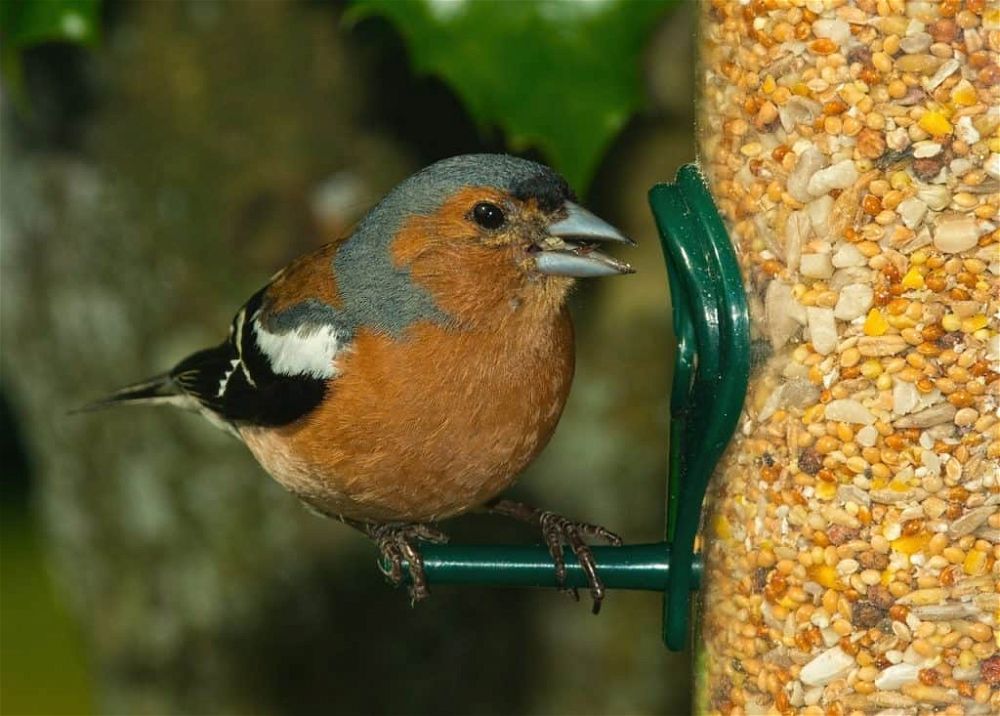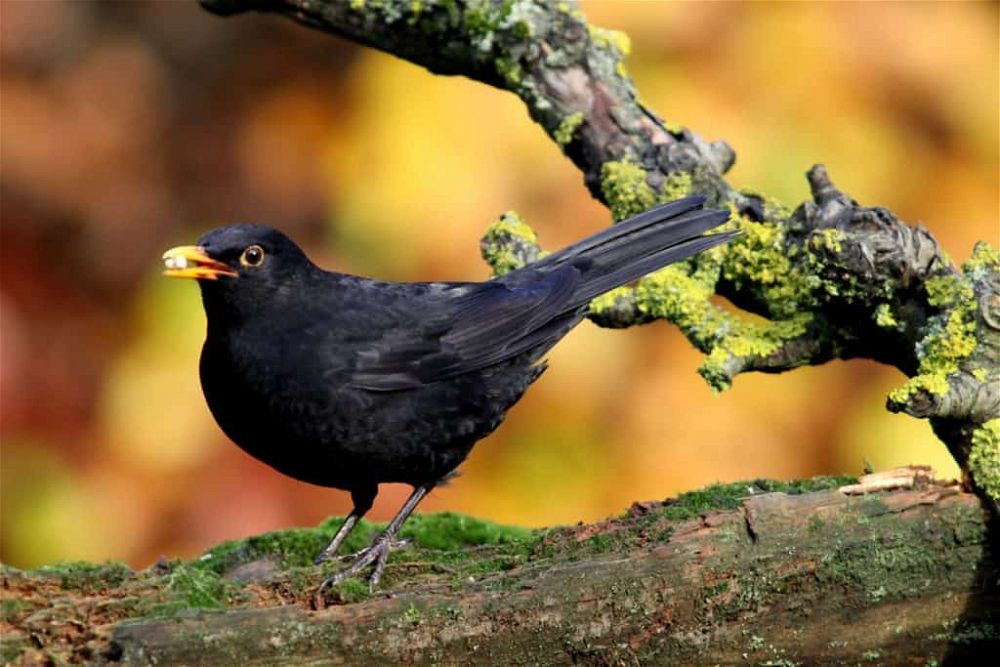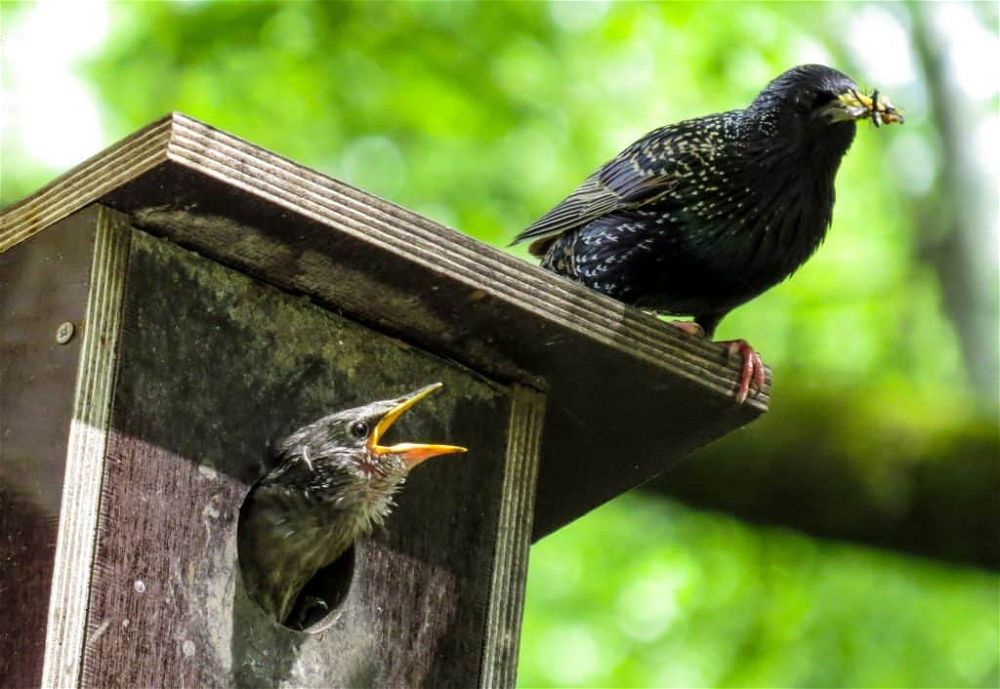
Have you watched the birds recently? If not, I’d heartily recommend it.
Our UK birds include bully robins, timid wrens, gentle pigeons, and here-today-gone-tomorrow swallows all fighting for survival. It’s like a soap opera out there.
I love it because bird watching is one of the few activities that doesn’t cost a lot and it gives back to the environment too.
Our garden birds are feeling the hit of climate change, farming change, and our obsession with building over the natural world. It’s a travesty because our birds are beautiful and feisty. It’s impossible not to admire them.
So, here’s how you can attract what’s left of our declining bird population to your garden and watch them flutter about their business.
Before long you’ll start to recognise certain individuals –the blackbird with a white spot on his wing, or the blue tit with a darker shade of blue as a hat. Maybe they’ll even bring their babies along for you to see.
Why Birds Are In Decline
It’s us of course.
There’s been a serious decline in the number of UK birds across the nation. Think back, when did you last see a thrush, a skylark, or even a little brown sparrow?
This decline has taken time. It hasn’t been a dinosaur-type mass extinction. Birds are tough, they can take a hit and evolve, but it’s getting out of hand now.
The State of the Nations Bird’s Report says changes in farming activity such as digging up hedgerows for larger fields, drainage, and changes in cropping practice has led to loss of habitat and food sources.
Birds don’t get a chance to pick around in the cornfields anymore. They’re harvested, ploughed and planted again straight away. Added to that our increased use of pesticides means insect-eating numbers are falling too.
Climate change also plays its part. Migratory birds such as swallows have started laying their eggs earlier by around 15 days. That doesn’t sound like a big deal, but it means they aren’t hitting peak insect time and the chicks don’t get enough food.
The birds that seem to cope best are the ones that can take advantage of your benevolence! Robins, tits, nuthatches – woodland species that can make the most of the garden.
I think it’s our responsibility to provide birds with food, water, and habitat, after all, if it’s wasn’t for our housing estates and massive food requirements they would naturally flourish.
Good news then that you can help them. The birds we saw as children are still there. There’s not so many, but they are nearby and they’re looking for water, food and a home.
That’s where your life-saving back garden can make a real difference.
Provide Fresh, Clean Water
The single most important thing you can do is provide a water source. Nothing can survive without water. All wildlife is dependent on it.
Birds need lots of water in the summer and don’t forget about the winter months which can be windy and dry. Unless there are lots of puddles on the ground, finding a drink can be thirsty work.
They also need water to keep their feathers in good shape. Shabby feathers mean birds get wet and cold.
You can easily and cheaply set up a birdbath to get a great view of their activities.
I set up a large terracotta saucer over the summer and within half an hour blue tits and blackbirds were drinking there. I’ve upgraded to several birdbaths that are works of art now, but the terracotta saucer remains for my hedgehog visitors and the blackbirds seem to prefer it.
Bird baths need regular topping up. Birds will only use their energy to visit if there’s a consistent supply. You’ll need to clean it too – a simple scrubbing brush once a week is enough to keep mosquitoes and algae to a minimum.
If you’re feeling generous, a birdbath at floor level and one off the ground will attract a greater number of feathered friends. Blackbirds, for example, feed on the ground and like water there too, whilst little birds like robins and tits prefer a safer height.
Another good way to attract birds with water is a pond. It doesn’t need to be large, just deep enough so it doesn’t dry out. This will attract all kinds of wildlife.
Provide Nutritional Food
After a water source, providing food is the next best way to attract bird life to your yard.
In the summer dry weather causes food shortages and during a freezing winter it’s in short supply. Small birds like robins and blue tits can simply die in their sleep from cold and hunger. That’s not a nice thought, especially when you can do something to make life easier for them.
Bird food isn’t expensive and it makes a huge difference. The RSPB say supplemental feeding saves lives, so be a superhero.
I’ve found that all birds great or small visit my feeders three times a day.
In the morning around 7-8, then lunch at 12ish and before sundown at 5-6 or earlier depending on the time of year. They are creatures of habit for sure.
What food you put out depends on the type of bird you’d like to attract. Here are some ideas.
Seeds and Nuts
- Millet seeds – adored by house sparrows, finches, dunnocks, and doves
- Peanuts – Great tits, blue tits, coal tits, robins, wrens, nuthatches and greenfinches
- Sunflower hearts/seeds– all birds love these
- Black sunflower hearts/seeds – all birds love them and they’re higher in oil than standard ones so even more beneficial.
- Nyjer seeds – goldfinches and siskins love them as do nuthatches, house sparrows, greenfinches and great spotted woodpeckers. Nyjer seeds need a special feeder as they are very small.
Fat balls and coconut halves
Most small birds, and big ones too, like and benefit from solid fat balls. It gives them a huge boost during the winter, but in summer they can remain untouched and often melt in direct sunlight.
You’ll find fat offered in many ways, but the mesh bags that hold fat balls are a danger to birds whose small feet get trapped in the netting. Pop them in a hanging feeder instead or choose safe no-mesh coconut halves.
You can make your own by melting lard and adding seeds or fruits. Refill your emptied coconut shells or use a plastic cup.
Grated mild cheddar is a great fat source too, and particularly appreciated by robins
Flutter Butter
A relatively new and tidy concept! A specialist jar of fat fits neatly in a hanger or fixed wall mount.
Fruit
Blackbirds and thrushes love fruit. A handful of plain sultanas or currants on the bird table or ground are always welcome, as are chopped apples, pears, and grapes.
Mealworms and Waxworms
Robins, tits, and many others love mealworms and waxworms.
You can buy them dried or live and they’ll be eaten up quickly, but wildlife hospitals warn against feeding wildlife excessive amounts of dried mealworms as it can lead to bone softening. Offer fats, seeds, nuts, fruit and dried mealworms as a treat.
Natural Growing Foods
Plant some bird-friendly berry bushes such as hawthorn, ivy, teasel, and pyracantha. These provide natural food sources in the form of pollen-attracted insects and fruit.
You could also stop using garden pesticides. Bees and caterpillars are top food choices for birds along with all manner of insects. Create a pesticide-free wildlife-friendly garden and the birds will move right in.
What Not To Feed The Birds
Food is more than welcome all year round, but in the spring and summer stop feeding whole peanuts and large chunks of food as these can choke baby birds.
Smaller birds won’t take wheat, barley, split peas, beans, rice or lentils but larger birds like doves, pigeons and magpies will. If you want to keep those kinds of birds out, stick to hanging feeders with seeds that small birds enjoy.
Bread is the traditional food for birds, but it doesn’t have anything in the way of nutrients. You should also avoid salt which they can’t metabolise, sugary foods and anything with alcohol in it.
How To Easily Feed Birds
Put your feeder in a safe place so birds feel confident coming for lunch.
They aren’t likely to visit the centre of an open garden, preferring to hide in the safety of trees and hedgerows.
Here are some ways you can built their confidence and get a great view too.
A bird table
Either freestanding or attached to a fence, bird tables give a feeling of security to birds and prevent larger species getting all the food. Some have extra hooks and poles to attach fat coconuts and small dishes of water.
Hanging feeders
There are lots of different types and you need one to suit the feed.
A mesh-metal feeder is good for fat balls and peanuts, a plastic drop-down feeder is good for seeds, and we said above, Nyjer seeds are tiny and need a specialist feeder.
If squirrels are a problem a squirrel-proof bird feeder with a domed roof or weight baffle will prevent them taking all the offerings.
Feel sorry for the squirrels?
Me too!
Keep them off the bird feeder with their own squirrel café. The little chaps lift up the lid and take out a peanut.
Suction feeder
These are clear plastic bowls that stick to your window for an extreme close up.
If you don’t yet have many garden birds, you’ll need to gain their trust with hedgerow offerings first – but they will come with time.
You can also buy novelty bird feeders such as teacups and stakes that push into the soil with a plate on top. These are pretty and make fun gifts.
The ground
Many birds can’t hang from a feeder and need to eat from a flat surface.
You may notice tenacious robins trying to reach sunflower seeds from a hanging feeder to no avail. Ground-feeding birds like these have to eat from the grass or a large bird table so they don’t have to cling on.
Keep Everything Sparkling Clean
We’ve already spoken about the importance of clean water and the same goes for food sources.
Each week scrub down your table and empty the feeders. Use soapy water or buy a mild wildlife-friendly antibacterial spray. Birds are prone to respiratory infections which can spread through bird table spores.
If you notice some food is left at the end of the day put out less, otherwise the spare will go moldy or attract rats.
Provide A Safe Habitat
Garden birds are shy, they are predated by cats and larger birds such as sparrowhawks so they keep a low profile. You’re much more likely to attract birds into your garden if its leafy and has plenty of hidey holes.
If you have a hedge leave some bits wild, birds love to hide in the thicket. Thick bushes are good cover and trees are great for birds but we haven’t all got established trees or the room to plant them.
If your outdoor space is compact choose a crab apple or ornamental cherry and plant it near your water and food stations. These trees don’t get too big but give birds safety. The also provide insect habitat and fruits for them to eat.
So that’s the environment sorted, but what about a place to sleep and raise a family?
Birds love to huddle in the depths of a hedge, but hedges are all too often replaced with wooden panels which are no good for wildlife and in the case of hedgehogs, detrimental. It’s your duty to pop up some bird boxes and dig a hole beneath the panels!
Birds need shelter during a cold winter and they will snuggle up together for warmth in nest boxes. In springtime, they’ll use those nest boxes to lay eggs and fledge young.
Your birdbox needs to be out of the direct sun or youngsters will die of heat, it also needs to be out of reach of cats, so the top of a fence line is no good. Tucked against a shed or wall is a good option if you’ve no trees.
Clean out nest boxes in autumn to prevent spreading disease and don’t go too near in springtime, just listen for the little pip-pips.
Roosting pouches are another great way to provide some warmth and safety at night. These are inexpensive woven nests that hang in a hedge or tree. They look lovely too.
How To Watch Birds
After you’ve improved your garden and made it a des-res for Robin and Jenny-wren how can you get a good look at your visitors?
Put food and water close to a window
The most obvious way is to draw them closer to your window.
This may take patience as our shy birds like to stick to hedges and trees. You will need to gradually add extra food sources closer to your window over time.
A suction window feeder is the ultimate in confidence. If they’re happy to come that close, you’re a bird-whisperer.
Binoculars
If they won’t come to you, cheat with binoculars.
A decent pair will allow you to see each and every feather, beak shapes, and their little legs in glorious technicolor.
The really shy ones like woodpeckers are less likely to come close, so if you want to see a rarity, binoculars are essential.
Leave your binoculars by the window because getting up to search for them only results in scaring away the birds.
Nest cams
Bird Box Cameras are a fantastic glimpse into the secret world of birds. But beware!
If you are sentimental like me you will watch the little birds grow every day, name them and wait for fledging. If something should happen, and they don’t all make it, you’ll be upset.
I’ve watched blue tits and great tits fledge from a nesting box with my nest cam and it’s nerve-wracking, especially the time I spotted a magpie looking through the entrance hole.
If you buy a nest cam fit it during winter or you risk disturbing a nesting pair.
A guide
Either an app or an old-fashioned guidebook will show you how to identify the different species that will now flock to your bird paradise.
Can you tell the difference between boys and girls? What about migratory birds and youngsters? There’s so much to learn.
It’s all too easy to mistake a fledgling robin for a sparrow as they don’t grow a distinctive red breast until adulthood. Some of the rarer types like fieldfares will have you running for information, so best get it to hand to begin with!
Bring On The Birds!
To entice birds into your garden you need to offer water, food, and a safe habitat all year round. It’s no good just feeding now and then or letting the birdbath run dry. Birds are fickle – they will follow the resources and who can blame them.
I hope this guide has helped you think about how you can bring more birds into your garden and that it’s encouraged you to start bird-watching.
Our little feathery chaps need help, and your garden could be the perfect environment to boost their numbers – not to mention you’ll enjoy some relaxing no stress bird spotting.
It’s the best hobby around.







